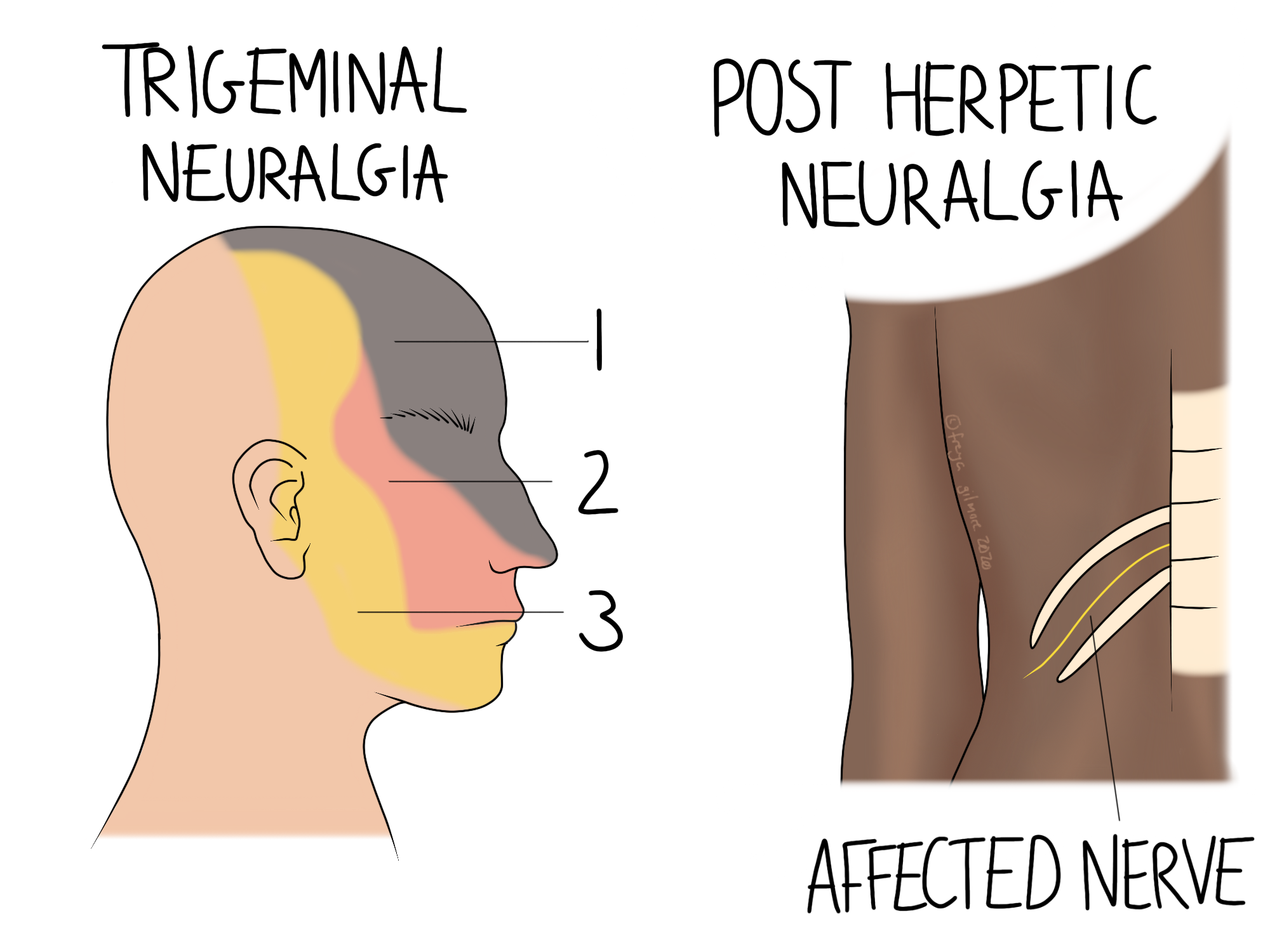31 March 2021
Neuralgia

Neuralgia refers to pain from a nerve, but the definition does not technically include "trapped nerves" like sciatica.

Symptoms
Like other types of nerve pain, symptoms can include:
- Shooting, sharp, or burning pain
- Hypersensitivity to pain, or feeling pain from usually non-painful stimuli
- Muscle spasms
Sometime neuralgia is caused by inflammation of the nerve, so you may find that you can't get into a position that relieves it immediately.
Trigeminal Neuralgia
The trigeminal nerve is a nerve that splits into three branches to supply the face with movement and sensation. Unlike nerve supplying the arms and legs, it doesn't originate from the spinal cord. Instead, it is a cranial nerve, meaning it exits the brain directly before passing through the skull to its destination.
The cause of trigeminal neuralgia is often unknown, but sometimes it may be due to inflammation around the small space in the skull that it passes through.
Trigeminal neuralgia is characterised by agonising pain that may shoot across one side of the face. Some people also develop facial spasms that coincide with the pain. That is why it is also known as "Tic Doloureux". Your osteopath may want to send you for further testing to identify the exact cause of the irritation. You may be referred for imaging or a blood test to rule serious factors in or out.
Even if treating the cause is out of our remit, we still have techniques that can help desensitise a nerve.
Post Herpetic Neuralgia
After a case of shingles, some people develop nerve pain. Shingles is caused by a herpes virus, and some people develop it years after an infection with chicken pox (caused by the variella zoster virus), without coming into contact with anyone else who has it. This is because the virus lays dormant in nervous tissue. If the immune system is compromised, it may return as shingles.
The shingles rash often affects the skin around the ribs, following a space between two ribs. The line it follows is actually the course of a nerve, which links us back to how the virus hibernates within the nerves. For some people, this infection can cause neuralgia of the nerve affected by the rash. This presents as lingering pain for at least three months; it will outlast the rash itself. There may also be hypersensitivity, including pain from things that would not normally be painful, such as clothes brushing over skin.
Although we can help with neuralgia, we cannot treat you while the shingles rash is active as shingles is contagious.
Osteopathy
Your osteopath is qualified to help with your neuralgia. The cause of neuralgia is unknown in some cases, but we can diagnose the nerve involved and help you to manage your symptoms. Nerve pain is unpleasant, but the sooner we get started, the better your prognosis will be.
Make an appointment here to start managing your pain.
Learn more
At Ilminster Osteopathy my goal is to help people achieve their goals whatever they may be. Watch our video to find out more.

